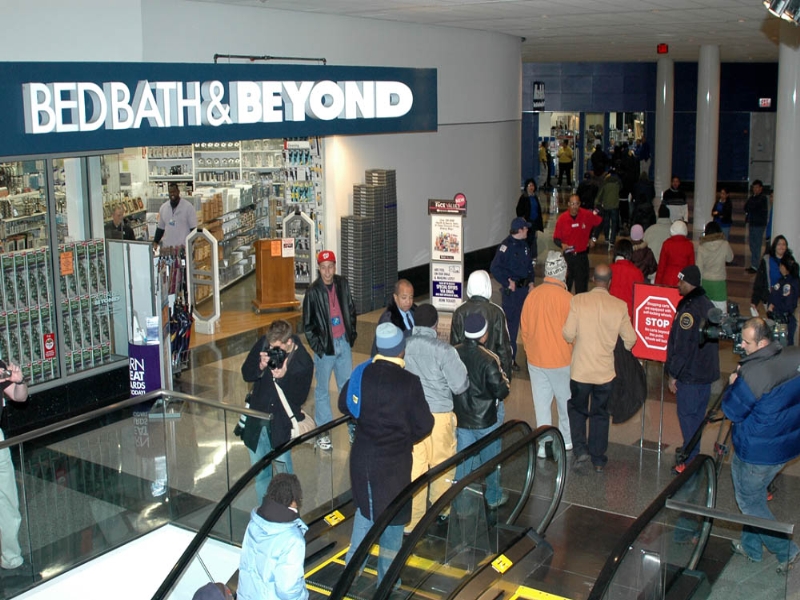THE FRENZIED HISTORY OF BLACK FRIDAY

The leaves have fallen; cool, crisp mornings have been swapped for cold and rain; and the Halloween décor is on clearance in the stores. Soon every business will dust off the same tired Christmas playlist we all know, and the holiday shopping season will be well underway.
For many people in the U.S., the day after Thanksgiving – Black Friday – is the kickoff time to do some major Christmas shopping. Black Friday is not recognized as an official U.S. holiday, although many people in the workforce (not retail workers, obviously) have the day off.
In the 1960s police in Philadelphia complained about city streets being clogged with cars and pedestrians, heading for the department stores to go shopping after Thanksgiving. They named this day “Black Friday” and it spread and gained popularity, although this was not meant to be a positive term from the police viewpoint. Department stores in Philadelphia attempted to rebrand the event as “Big Friday,” but it didn’t catch on.
The day is also called Black Friday in reference to the old bookkeeping process of recording a store’s monetary loss in red ink, and profits in black ink. The idea is that over the course of a calendar year, businesses finally sell enough to transition from red to black (for keeps, for the rest of the year) during the successful Black Friday sales events.
As department stores began to see that discounting prices could draw in large crowds of eager customers, Black Friday became more popular than last-minute Christmas shopping. These sales expanded over time with many retailers opening on Thanksgiving Day itself and continuing sales through the ensuing weekend. This has put some relief on shopping that particular Friday, but it remains the busiest shopping day of the year.
Black Friday is a day for excited shoppers, discounts, and fun – but it has evolved quite a bit over time. It went from congested streets and shopping centers to people standing in long lines that wrap around stores, even setting up tents outside the storefront to be the first to get their flat-screen TVs.
Frenzied discount hungry shoppers rushing to get a great deal have often been met with disaster, year after year – for example, people brawling over Tickle Me Elmo dolls, or a woman pepper spraying a crowd to keep them from a popular game console. But 2008 marks when Black Friday shopping turned deadly. On Long Island, New York, an early morning horde amassed outside a Walmart before it opened, grew inpatient, and started pushing against the doors. Employees inside spotted a pregnant woman being crushed by the surge and attempted to open the door just to let her in, but the crowd seized the opportunity and pushed through, breaking down the doors. The woman escaped the crowd with minor injuries, but a man was trapped beneath the doors and trampled to death.
As time goes on, consumers are opting more often to shop online in the comfort of their home. Many just don’t want to wait outside in the cold and go to battle with a crowd over a blender. Another big shopping day arose in 2005, called Cyber Monday – offering holiday promotions exclusively to online customers the Monday after Thanksgiving.
Although online shopping has greatly expanded for quite some time, the COVID pandemic has increased the demand dramatically. Last year, most stores were closed on Thanksgiving for the first time in years, and the few stores that did stay open were much quieter than in years past.
As for 2021, the holiday shopping outcome remains to be seen, but, hopefully those customers who do choose to shop in-store stay safe out there.

Leave a comment